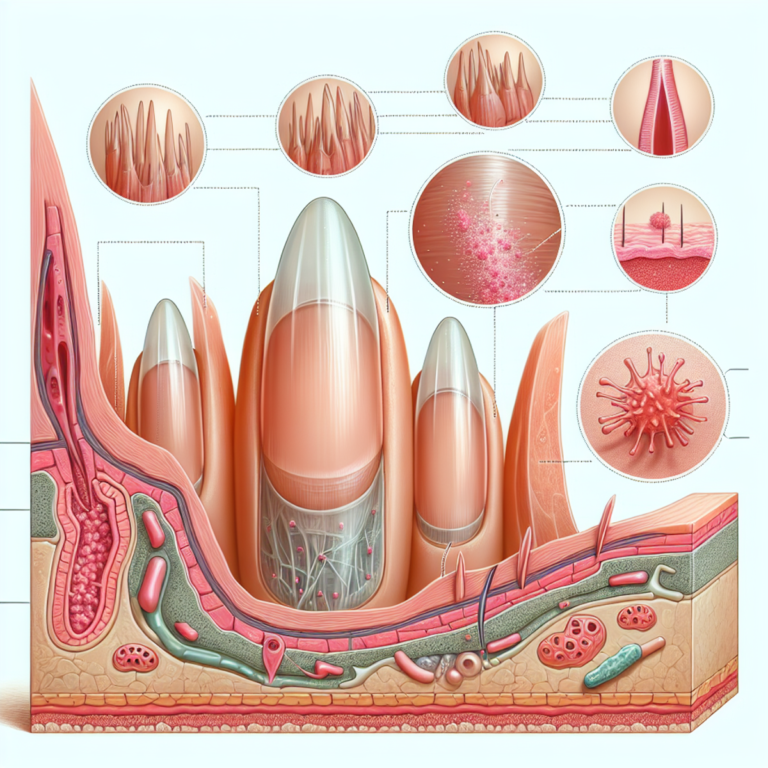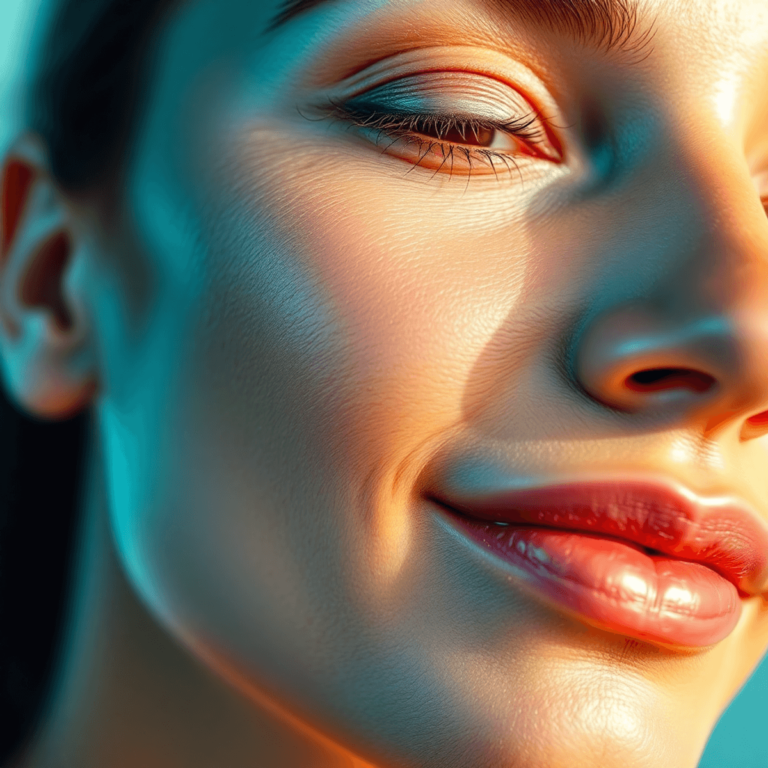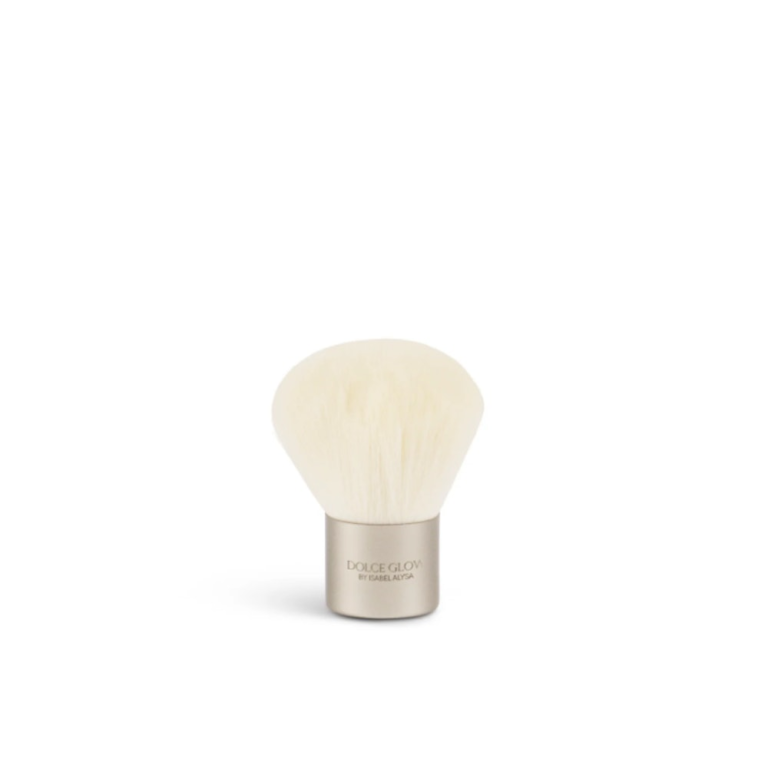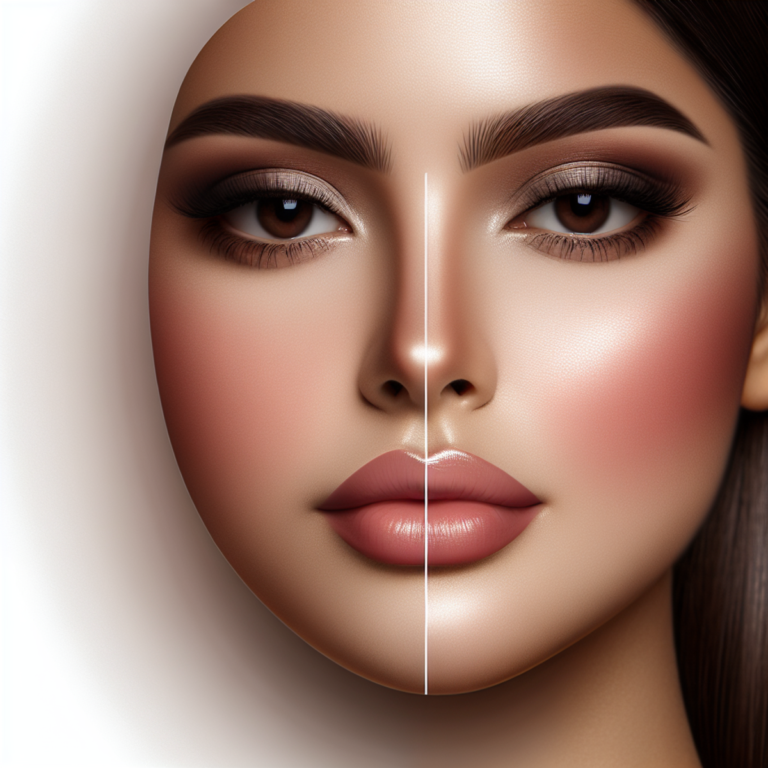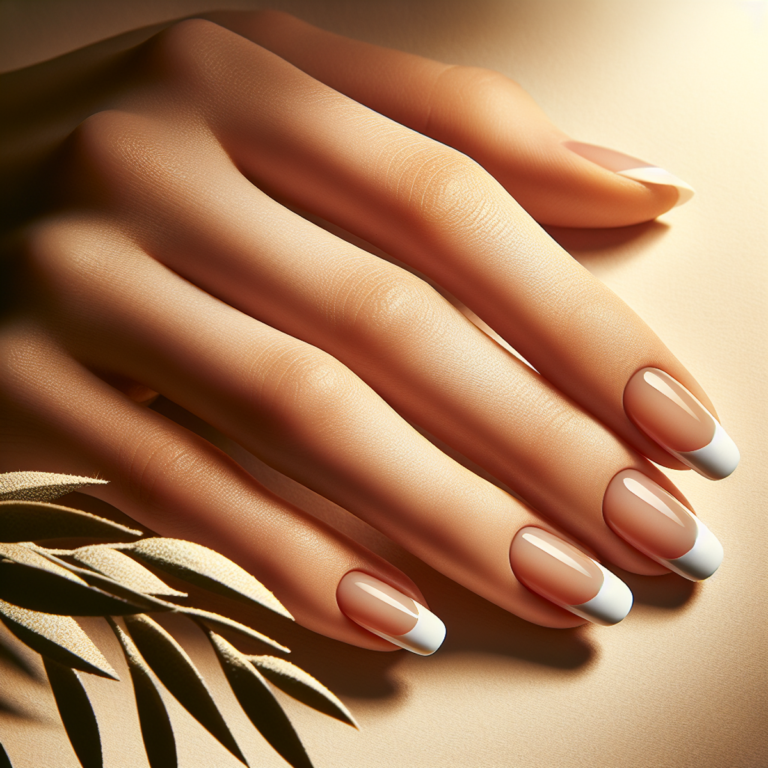Say goodbye to cystic acne with these natural hacks!

Introduction
Cystic acne is a severe form of acne that develops deep within the skin, characterized by large, painful lumps that often resemble boils. This condition can have a significant impact on individuals’ lives, affecting not only their physical appearance but also their emotional well-being. Daily activities can become challenging, and self-esteem may suffer due to the persistent and noticeable nature of these breakouts.
Addressing cystic acne effectively is crucial for both physical and emotional health. Ensuring your skin is clear can boost confidence and improve quality of life. While traditional treatments like medication are available, they may not always be accessible or desirable for everyone.
Natural hacks offer a holistic approach to combat cystic acne, targeting the root causes with gentle yet effective remedies. These methods focus on reducing inflammation, balancing skin health, and promoting healing from within.
Say goodbye to cystic acne with these natural hacks! Dive into these proven strategies to discover how to get rid of pimples and achieve clearer skin naturally.
We will explore various techniques including dietary adjustments, topical treatments, and lifestyle changes that work together to help you remove pimples overnight and maintain long-term skin health.
Understanding Cystic Acne
Cystic acne is a severe form of acne that develops deep within the skin, characterized by large, painful lumps that can resemble boils. Unlike regular acne, which may present as blackheads or whiteheads on the skin’s surface, cystic acne forms deeper and is often more painful and difficult to treat. This type of acne can have a significant impact on your physical appearance and emotional well-being.
Key Differences from Other Types of Acne
- Hormonal Acne: Typically occurs around the jawline and chin. It’s often linked to menstrual cycles or hormonal changes.
- Inflammatory Acne: Includes red, swollen pimples caused by clogged pores filled with bacteria.
Cystic acne stands out due to its depth and severity. It doesn’t respond well to over-the-counter treatments designed for milder forms of acne.
Common Causes of Cystic Acne
Several factors contribute to the development of cystic acne:
- Hormonal Imbalances: Fluctuations in hormones, particularly androgens, can increase oil production in the skin.
- Excess Oil Production: Sebaceous glands produce too much oil, leading to clogged pores.
- Bacterial Overgrowth: Accumulation of bacteria within hair follicles exacerbates inflammation.
Understanding these causes is crucial for anyone looking to learn how to remove pimples naturally and permanently.
Symptoms of Cystic Acne
Identifying cystic acne involves recognizing its distinctive symptoms:
- Deep, Painful Nodules: These nodules are located beneath the skin’s surface and can be quite large.
- Redness and Swelling: The affected areas are often inflamed and tender to touch.
- Persistent Blemishes: Unlike other forms of acne that may clear up relatively quickly, cystic acne can linger for weeks or even months.
Recognizing these symptoms early can help you seek appropriate treatment options, whether through natural hacks or professional medical advice.
Natural Hacks to Combat Cystic Acne
1. Ice Treatment
Ice is a simple yet effective method to help reduce the swelling and redness associated with cystic acne breakouts. By constricting blood vessels, ice can decrease inflammation and numb the pain caused by these deep, painful nodules.
How Ice Works:
- Reduces Swelling: Cold temperatures constrict blood vessels, reducing fluid buildup in the affected area.
- Minimizes Redness: By reducing blood flow, ice helps to lessen the appearance of redness.
- Numbs Pain: The cooling effect provides temporary relief from the discomfort associated with cystic acne.
Step-by-Step Instructions for Ice Treatment:
- Cleanse Your Skin: Before applying ice, ensure your face is clean. Use a gentle cleanser suitable for sensitive skin to remove any dirt or oil.
- Prepare the Ice: Wrap a few ice cubes in a clean cloth or use an ice pack specifically designed for facial use. Direct application of ice can damage delicate facial skin.
- Apply Gently: Place the wrapped ice on the affected area for about 1 minute. Avoid pressing too hard as this can cause further irritation.
- Rest Periods: Remove the ice and wait for 5 minutes before reapplying if necessary. This gives your skin time to recover from the cold exposure.
- Repeat as Needed: You can repeat this process several times a day, but ensure you give your skin adequate breaks between applications to prevent frostbite or irritation.
- Aftercare: Follow up with a gentle moisturizer to keep your skin hydrated. Look for non-comedogenic options that won’t clog pores.
By incorporating ice treatment into your skincare routine, you can effectively manage some of the symptoms of cystic acne like swelling and redness without resorting to harsh chemicals or medications. This natural remedy is particularly useful during acute flare-ups when you need immediate relief from discomfort and visible inflammation.
Interestingly, cold showers could also be beneficial as part of a broader strategy in managing acne. Ice treatment is just one of many natural remedies for cystic acne that can be integrated into a holistic approach to combat this challenging condition.
For more comprehensive strategies on how to tackle pimples effectively and quickly, consider exploring these top strategies.
2. Aspirin Mask
Aspirin, a common household item, has significant anti-inflammatory properties due to its active ingredient, acetylsalicylic acid. This compound is closely related to salicylic acid, which is commonly found in many over-the-counter acne treatments and is known for its ability to exfoliate the skin and reduce inflammation.
How to Make an Aspirin Mask
Transforming aspirin into a powerful mask for cystic acne is easy. Here’s how you can do it:
1. Gather Materials:
- 4-5 uncoated aspirin tablets
- A few drops of water
- A small mixing bowl
- Honey or plain yogurt (optional for added benefits)
2. Preparation Steps:
- Crush the aspirin tablets into a fine powder using the back of a spoon or a mortar and pestle.
- Add a few drops of water to the powdered aspirin and mix until it forms a smooth paste.
- For added hydration and soothing properties, mix in a teaspoon of honey or plain yogurt. Honey is known for its moisturizing effects while yogurt can help in soothing the skin.
3. Application:
- Cleanse your face thoroughly with a gentle cleanser.
- Apply the aspirin paste directly onto the affected areas, focusing on active cysts.
- Leave the mask on for 10-15 minutes.
- Rinse off with lukewarm water and pat your skin dry.
Using an aspirin mask can help target active cysts by reducing swelling and promoting faster healing. In fact, aspirin has been used as an effective treatment for acne due to its anti-inflammatory properties. While these natural remedies for cystic acne can be effective, it’s important to consult with a dermatologist for persistent or severe cases to ensure you’re receiving the best possible care.
3. Dietary Changes for Clearer Skin
There’s a strong link between what you eat and the health of your skin, especially when dealing with cystic acne. Some foods can trigger breakouts and make the condition worse. Here are some common offenders:
- Dairy: Milk and other dairy products may increase insulin levels and contribute to hormone imbalances, potentially worsening acne.
- Sugar: High sugar intake can spike insulin levels, leading to increased oil production and inflammation.
- Processed Foods: Foods high in refined sugars and unhealthy fats can promote inflammation and disrupt hormonal balance.
To counter these effects and boost your skin health, try adding more anti-inflammatory foods to your meals:
- Fatty Fish: Rich in omega-3 fatty acids, fish like salmon and mackerel help reduce inflammation.
- Leafy Greens: Vegetables such as spinach and kale are packed with antioxidants that support overall skin health.
- Nuts and Seeds: Almonds, walnuts, and flaxseeds provide essential fatty acids that can help maintain clear skin.
- Fruits: Berries, oranges, and other fruits high in vitamin C aid in skin repair and reduce inflammation.
By focusing on a diet rich in these anti-inflammatory foods, you may notice a reduction in cystic acne flare-ups.
While natural remedies for cystic acne offer potential benefits like reduced inflammation and improved skin healing, it’s crucial to consult with a dermatologist for severe cases. Understanding how diet impacts your skin is a powerful tool in your arsenal against cystic acne.
4. Vinegar Cleanser for Blemish Control
Vinegar, especially apple cider vinegar, is known for its antibacterial properties. This makes it a promising natural remedy for cystic acne. By killing bacteria on the skin’s surface, vinegar can help prevent future breakouts and reduce existing inflammation.
Benefits of Vinegar for Skin
- Antibacterial: Helps to kill harmful bacteria that cause acne.
- Astringent: Tightens pores, which can prevent clogging.
- pH Balancer: Helps restore the natural pH of the skin, creating an environment less favorable for acne-causing bacteria.
Simple Diluted Vinegar Cleanser Recipe
Creating a vinegar cleanser at home is straightforward. Here’s a simple recipe:
- Ingredients:
- 1 part apple cider vinegar
- 3 parts water (distilled or filtered)
- Instructions:
- Mix the apple cider vinegar and water in a clean bottle.
- Shake well before each use to ensure even distribution.
- Using a cotton pad, apply the solution to clean skin after washing your face.
- Leave it on for about 10 minutes before rinsing off with lukewarm water.
Tips for Use
- Patch Test First: Before applying to your face, do a patch test on your wrist to check for any adverse reactions.
- Avoid Overuse: Using this cleanser more than once daily can lead to dryness or irritation.
- Moisturize Afterwards: Follow up with a non-comedogenic moisturizer to keep your skin hydrated.
Using natural remedies like a vinegar cleanser can reduce inflammation and promote better skin healing. It’s crucial to remember that while these hacks can be effective, consulting with a dermatologist remains important for severe cases of cystic acne.
5. Turmeric Mask for Soothing Inflammation
Turmeric’s powerful anti-inflammatory properties make it a popular choice for those seeking natural remedies for cystic acne. This golden spice can help calm angry cysts and reduce swelling, providing much-needed relief.
Benefits of Using Turmeric
- Anti-inflammatory effects: Turmeric contains curcumin, a compound known for its ability to fight inflammation and promote skin healing.
- Antibacterial properties: It helps combat bacteria that contribute to acne breakouts.
- Antioxidant-rich: Turmeric aids in repairing damaged skin and improving overall skin health.
DIY Turmeric Mask Recipe
Creating a turmeric mask at home is simple and allows you to harness its benefits directly:
Ingredients:
- 1 teaspoon of turmeric powder
- 2 tablespoons of plain yogurt (or honey for a more hydrating mask)
- A few drops of lemon juice (optional, but beneficial for brightening)
Instructions:
- Mix the turmeric powder with yogurt (or honey) in a small bowl until you achieve a smooth paste.
- If using lemon juice, add a few drops to the mixture and blend well.
- Apply the mask evenly over your face, avoiding the eye area.
- Leave it on for 10-15 minutes.
- Rinse off with lukewarm water, gently patting your skin dry with a clean towel.
Application Tips:
- Perform a patch test: Before applying the mask all over your face, test it on a small area of your skin to ensure you don’t have an adverse reaction.
- Use an old towel: Turmeric can stain fabrics; use an old towel or wear an old shirt during application.
- Moisturize after rinsing: Follow up with a non-comedogenic moisturizer to keep your skin hydrated.
While these natural hacks can be effective in reducing inflammation and improving skin healing, always consult with a dermatologist if you experience severe cases of cystic acne.
6. Probiotics: Balancing Your Gut for Clear Skin
Recent studies show that probiotics can play a big role in keeping our skin healthy by controlling inflammation. These good bacteria, often found in fermented foods and supplements, help balance the gut microbiome, which can greatly affect our skin.
How Probiotics Help Our Skin
Probiotics are known to:
- Reduce Inflammation Naturally: By promoting a balanced gut flora, probiotics can help reduce systemic inflammation, which is often a contributing factor to cystic acne.
- Improve Skin Healing: A healthy gut supports a stronger immune system, aiding in faster skin repair and reducing the severity of breakouts.
Best Probiotic Strains for Acne
Certain probiotic strains have shown promise in improving conditions like cystic acne:
- Lactobacillus acidophilus: This strain helps maintain an optimal balance of good and bad bacteria in the gut, reducing inflammation and supporting overall skin health.
- Bifidobacterium bifidum: Known for its anti-inflammatory properties, this probiotic can help soothe irritated skin and prevent flare-ups.
- Lactobacillus rhamnosus GG: Research suggests this strain may improve skin barrier function and reduce the incidence of acne lesions.
You can get these strains into your diet through fermented foods like yogurt, kefir, and sauerkraut or via supplements. While these natural hacks can offer significant benefits, consulting with a dermatologist is essential for severe cases to ensure comprehensive care tailored to your specific needs.
7. Tea Tree Oil Treatment
Tea tree oil is a popular choice among those seeking natural remedies for cystic acne due to its potent antimicrobial properties. Its ability to combat bacteria makes it particularly effective in reducing the severity of cystic breakouts. The oil targets the bacteria trapped in hair follicles, which can lead to painful, inflamed cysts.
When using tea tree oil, dilution is key. Essential oils are highly concentrated and can cause skin irritation if applied directly. To safely incorporate tea tree oil into your skincare routine:
- Dilute the Oil: Mix a few drops of tea tree oil with a carrier oil such as jojoba or coconut oil.
- Patch Test: Test the diluted mixture on a small area of your skin to ensure you don’t have an adverse reaction.
- Apply Sparingly: Use a cotton swab to apply the diluted oil directly onto the cystic acne spots once or twice daily.
Tea tree oil benefits for cystic acne include reduced inflammation and improved skin healing, making it an appealing option for those looking to say goodbye to cystic acne with these natural hacks! This essential oil can help reduce swelling and redness, promoting clearer skin over time.
While these hacks can be effective, it’s important to consult with a dermatologist for severe cases. Professional guidance ensures that you use treatments safely and effectively, especially when dealing with persistent or severe cystic acne.
Adopting natural remedies like tea tree oil allows you to explore holistic approaches to improving your skin’s health, but always keep in mind that moderation and caution are crucial when applying any new treatment.
Establishing a Consistent Skincare Routine For Long-Term Results Against Cystic Acne Flare-Ups
A consistent skincare routine against cystic acne flare-ups is essential to manage and prevent stubborn blemishes. Regularly maintaining a tailored regimen can significantly reduce the severity and frequency of outbreaks, especially those driven by hormonal factors or excessive oil production.
Key Steps to an Effective Skincare Routine
- Cleansing
- Use a gentle, non-comedogenic cleanser twice daily. Cleansing removes excess oil, dirt, and bacteria that can contribute to acne without stripping your skin of its natural moisture.
- Exfoliation
- Incorporate a mild exfoliant containing salicylic acid or glycolic acid 2-3 times a week. These ingredients help unclog pores and remove dead skin cells, reducing the likelihood of cyst formation.
- Toning
- Apply a balancing toner with ingredients like witch hazel or niacinamide. This step helps restore your skin’s pH balance and tighten pores, creating a barrier against impurities.
- Treatment Products
- Use targeted treatments like benzoyl peroxide or retinoids on affected areas. These products work to kill bacteria, reduce inflammation, and promote cell turnover, addressing the root causes of cystic acne.
- Moisturizing
- Even oily skin needs hydration. Opt for lightweight, oil-free moisturizers labeled as non-comedogenic to avoid clogging pores while keeping your skin hydrated.
- Sun Protection
- Sunscreen is crucial for all skin types. Choose a broad-spectrum SPF 30 or higher that is non-comedogenic to protect your skin from UV damage without exacerbating acne.
Product Recommendations
- Cleanser: CeraVe Foaming Facial Cleanser – gentle yet effective for removing impurities.
- Exfoliant: Paula’s Choice Skin Perfecting 2% BHA Liquid Exfoliant – unclogs pores without irritating sensitive skin.
- Toner: Thayers Witch Hazel Alcohol-Free Toner – soothes and balances the skin.
- Treatment: Differin Gel (Adapalene) – a potent retinoid for acne treatment.
- Moisturizer: Neutrogena Hydro Boost Water Gel – hydrating and non-comedogenic.
- Sunscreen: EltaMD UV Clear Broad-Spectrum SPF 46 – protects while being gentle on acne-prone skin.
Sticking to this routine consistently can provide significant long-term benefits in managing cystic acne flare-ups. Each step plays a vital role in maintaining clear and healthy skin while preventing future breakouts.
When To Seek Professional Help: Knowing The Limits Of Natural Remedies For Cystic Acne
Natural remedies can be beneficial for managing cystic acne, but there are times when professional medical intervention is necessary. Recognizing these situations ensures you receive the most effective treatment without delay.
Signs to Consult a Dermatologist
Certain symptoms indicate that it’s time to seek a dermatology consultation regarding persistent cases where home treatments fail:
- Widespread Lesions: If cystic acne covers large areas of the face, neck, back, or shoulders.
- Severe Pain: When the nodules cause intense discomfort or pain.
- Scarring: Early signs of scarring or pigmentation changes.
- No Improvement: Lack of noticeable improvement after several weeks of natural treatments.
Common Medical Treatments
Dermatologists offer various treatments tailored to severe cystic acne. Some common options include:
- Isotretinoin: A potent oral medication effective for severe cases. It targets oil production and inflammation but requires careful monitoring due to potential side effects.
- Corticosteroid Injections: Reduce inflammation and pain quickly, making them suitable for individual cysts.
- Oral Antibiotics: Target bacterial overgrowth and reduce inflammation.
- Hormonal Treatments: Birth control pills or anti-androgens can help if hormonal imbalances are the primary cause.
Navigating cystic acne with natural methods provides a holistic approach. Yet, recognizing when professional help is necessary ensures you achieve optimal skin health.
Conclusion: Embracing A Holistic Approach Towards Managing Cysts While Being Mindful Of Their Severity Level
Dealing with cystic acne can be tough. But don’t worry. There are many ways to tackle it, and natural remedies can be a helpful addition to your routine.
- Natural remedies like ice treatments, aspirin masks, dietary changes, vinegar cleansers, turmeric masks, probiotics, and tea tree oil may help with occasional breakouts.
- Persistent and severe cases of cystic acne need closer attention from qualified dermatologists who understand the complexities involved.
Say goodbye to cystic acne with these natural remedies! Remember to approach your skincare journey holistically while staying mindful of when professional help is needed.
FAQs (Frequently Asked Questions)
What is cystic acne and how does it differ from regular acne?
Cystic acne is a severe form of acne characterized by deep, painful nodules beneath the skin’s surface. Unlike regular acne, which may consist of superficial pimples or blackheads, cystic acne is often caused by hormonal imbalances, excess oil production, and bacterial overgrowth.
What are some natural remedies to treat cystic acne?
Natural remedies for cystic acne include ice treatment to reduce swelling, aspirin masks for their anti-inflammatory properties, dietary changes to avoid exacerbating foods, vinegar cleansers for their antibacterial effects, turmeric masks to soothe inflammation, probiotics to balance gut health, and tea tree oil treatments for their antibacterial benefits.
How can ice help with cystic acne?
Applying ice to cystic acne can help reduce swelling and redness associated with breakouts. To use ice effectively, wrap an ice cube in a clean cloth and apply it gently to the affected area for about 10-15 minutes.
What dietary changes can improve skin health and reduce cystic acne?
Incorporating anti-inflammatory foods such as fatty fish and leafy greens while avoiding dairy and sugar can help improve overall skin condition. A balanced diet plays a crucial role in managing cystic acne flare-ups.
How does turmeric benefit those with cystic acne?
Turmeric is known for its powerful anti-inflammatory properties that can calm angry cysts on the skin. A DIY turmeric mask can be made to soothe inflammation and promote healing when applied regularly.
Why should I consult a dermatologist when dealing with severe cystic acne?
While natural remedies can be effective in managing mild cases of cystic acne, consulting a dermatologist is essential for severe cases. They can provide personalized treatment plans that may include prescription medications or more intensive therapies.


